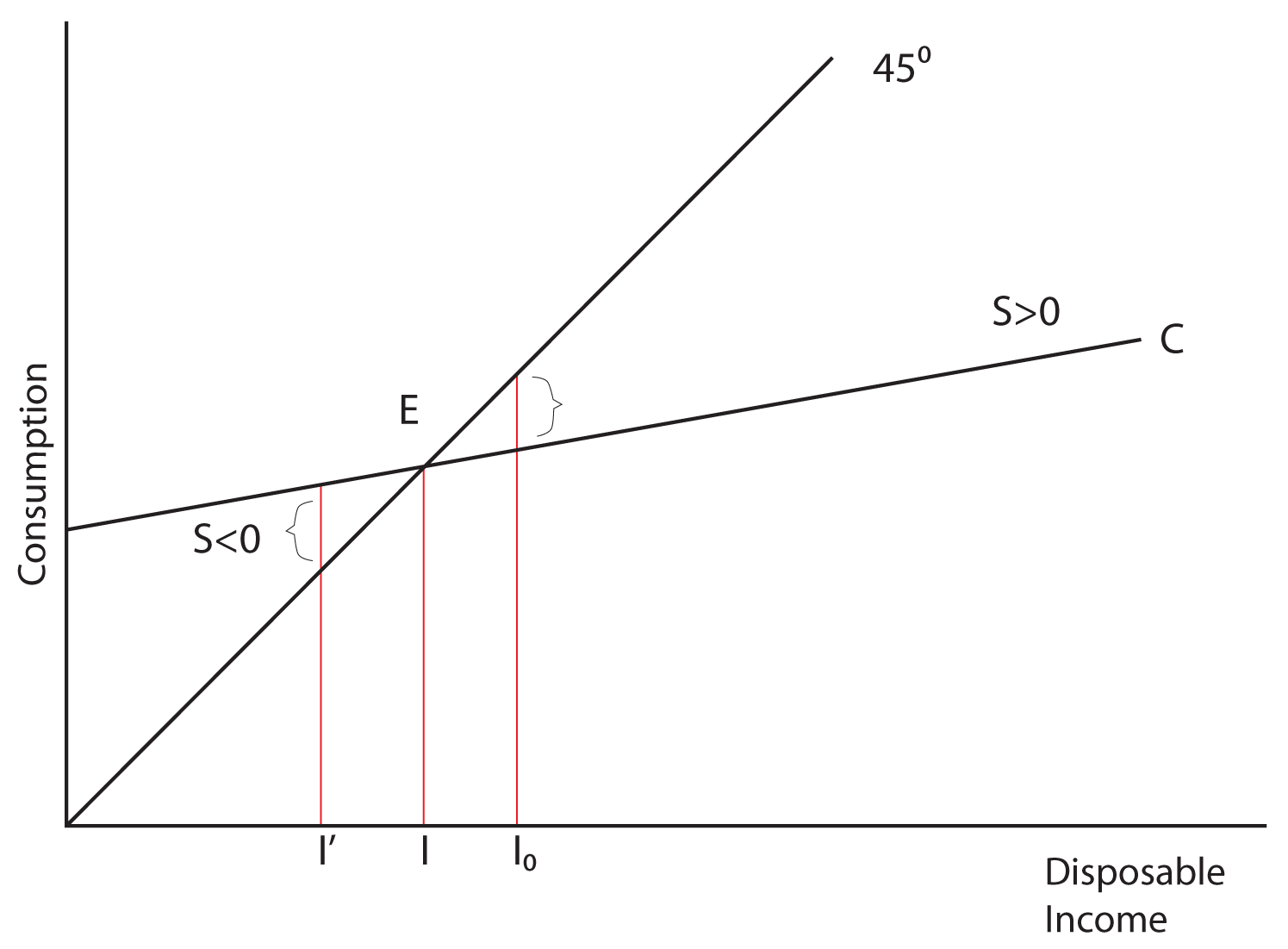Consumption and savings
Disposable Income (DI)


- Income after taxes or net income
- DI = Gross Income - Taxes
2 Choices
- With disposable income, households can either
- Consume (spend money on goods and dervices)
- Save (not spend money on goods and services)

Consumption
- Household spending
- The ability to consume is constrained by
- The amount of disposable income
- The propensity to save
- Do housholds consume if DI = 0?
- Autonomous consumption
- Dissaving
Saving
- Household NOT spending
- The ability to save is constrained by
- The amount of disposable income
- The propensity to consume
- Do households save if DI = 0? NO
APC & APS
- Average propensity to consume/save
- APC + APS = 1
- 1 - APC = APS
- 1 - APS = APC
- APC >1 .: Dissaving
- -APS .: Dissaving
MPC & MPS
- Marginal propensity to consume
- 𝚫C/𝚫DI
- % of every extra follar earned that is spent
- Marginal propensity to save
- 𝚫S/𝚫DI
- % of every extra dollar earned that is saved
- MPC + MPS = 1
- 1 - MPC = MPS
- 1 - MPS = MPC
The Spending Multiplier Effect
- An initial change in spending (C, Ig, G, Xn) causes a larger change in AS or AD
- Multiplier = 𝚫AD/𝚫Spending (C, Ig, G, Xn)
- Why? Expenditures and income flow continuously which sets off a spending increase in the economy.
Calculating the Spending Multiplier
- The Spending Multiplier can be calculated from the MPC or the MPS.
- Multiplier = 1/(1 - MPC) or 1/MPS
- Multipliers are (+) when there is an increase in spending and (-) when there is a decrease.
Calculating the Tax Multiplier
- When the government taxes, the multiplier works in reverse.
- Why? Because now money is leaving the circular flow.
- Tax Multiplier (note: it's negative)
- = -MPC/(1 - MPC) or -MPC/MPS
- If there is a tax CUT, then the multiplier is (+), because there is now more money in the circular flow.
Comments
Post a Comment